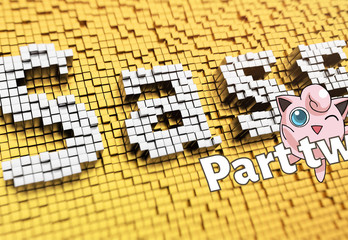While group of people making a company may be technically supreme, not working as a team will leave them dragging behind competitors. These are the five most common problems teams and their leaders run into.
"Not finance. Not strategy. Not technology. It is teamwork that remains the ultimate competitive advantage, both because it is so powerful and so rare."
- Patrick Lencioni, The Five Disfunctions of a Team
This blog post is heavily influenced by Patrick Lencioni and his book The Five Dysfunctions of a Team. In it, he describes common patterns of human behavior that undermine star teams and makes good and promising companies fail. Without further ado...
Absence of trust
While it might seem like common sense, I rarely find people to be truly trustworthy, including myself. What -is- trust in a team context? It means to be emotionally naked to other team members - an invulnerability based trust. Once you feel comfortable not holding back your opinions and disagreements with other team members, and once everybody (including you!) learns how to take the time to understand each other opinions and to objectively accept them - you can call yourself a team based on trust. I'm sorry. I don't know how to solve this. I need your help. I was wrong. Can you teach me? These are the trademark phrases of a trustworthy person.
Our current education and business world is effectively teaching us to "Never let them see you sweat". This ushers people to be competitive and protective of their reputations, which makes achieving vulnerability based trust difficult and a challenge for them. Maybe you can relate to the following situation. Imagine a person nobody feels like arguing with due to his or hers unwillingness to admit he's or she's wrong. Unwilling to consider the possibility that other people could be right. Familiar? Now imagine that certain somebody is saying something on a meeting most would oppose, but everybody is silent to disagree and are simply waiting in silence for a change of a meeting subject. This is common, and a problem, it slows down progress, it shuts down constructive arguments and the evolution of ideas. For the best ones the emerge you need a good debate, you need to consider other ideas, upgrade on yours, reevaluate.
For a good team to happen - you have to be vulnerable within the group. If just one team member is not, it will spread out like wildfire and the team will be full of superficial relationships and lack the motivation to argue and improve.
Dysfunctional team members:
- Don't share anything personal
- Hesitate to admit their mistakes
- Don't need help from anybody
Functional team members:
- Constantly question and reevaluate ideas objectively
- Comfortable with sharing their feelings
- Offer and accept apologies
What can I do to overcome this dysfunction?
- Get teammates vulnerable by making an example as a leader
- Identify and discuss individual strengths and weaknesses - 360 degree feedback
- Identify personalities with Mayer Briggs test

Trust is knowing that when a team member does push you, they’re doing it because they care about the team.
Patrick Lencioni
If a team fails the trust test, it can lead to our next dysfunction.
Fear of conflict
Meetings are important, so are conflicts, and they more often than not go hand in hand. There are never too many meetings, but there are bad ones. Without trust, conflict becomes simply forcing everybody else to buy into your idea. These are the bad ones. In contrast, a good meeting should be about finding the best possible answer.
Conflict is a good thing, but it's important to create team culture around it. People should not hold back, but there should be ground rules set in place on how to argue considering culture and individual differences. Stop creating artificial harmony with your silence.

Dysfunctional team members:
- Avoid conflict during the meeting
- Avoid topics that are critical to team success
- Have boring and unproductive meetings
Functional team members:
- Weigh in the ideas of all team members
- Place critical topics on the table as soon as possible
- Have engaging meetings
What can I do to overcome this dysfunction?
- Enforce ground rules for engaging in conflict
- Understand individual conflict styles
- Active praise for the conflict done right
- Leader should put topics team members are avoiding to talk about in the spotlight
If we don’t trust one another, then we aren’t going to engage in open, constructive, ideological conflict. And we’ll just continue to preserve a sense of artificial harmony.
Patrick Lencioni
Dodging conflict causes lack of commitment, because if you don't weight in - you don't buy in.
Lack of commitment
Allow me to expand on the latter sentiment. If you don't weight in - you don't buy in. Imagine someone silently disagreeing with a business direction on a meeting, even after the deed is done and everybody got their tasks. Truth be told, they don't have much incentive committing to it and doing their part. After all, they didn't like it, and they didn't even bother to converse about it.
The state of the matter is that everyone wants to be heard, but there are plenty of reasons why that fails to happen. Maybe someone's afraid to oppose, maybe they don't care, maybe the outcomes are too unclear to implore them further in a shared discussion. Passively committing to something is bullsh*t. The role of the leader here is to make sure everyone is engaged before making a decision. If everybody weighs in, they can support your final decision even if they don't necessarily agree with it. Moreover, by sharing their opinion they mentally stepped on the same ship with you and are more likely to commit.
Most reasonable people don’t have to get their way in a discussion. They just need to be heard, and to know that their input was considered and responded to.
Patrick Lencioni
Problems can also arise when a group of people can't agree on something and compromises are made. You win some, you lose some, but the company probably only loses. The leader should always break the tie, weight in all the inputs, and make the best decision in the long run. You can't make everybody happy, but you can keep the machine running smooth.
Dysfunctional team members:
- Bathe in excessive analysis and unnecessary delay
- Fear failure
- Are goal ambiguous
- Revisit previous discussions and decisions again and again
Functional team members:
- Clear on tasks and priorities
- Aligned around a common objective
- Learn from mistakes
- Move forward and change direction without hesitation
What can I do to overcome this dysfunction?
- Review commitments at the end of each meeting
- Disagree and commit mentally
- The leader should ask everyone: "What have we agreed upon today?"
Lack of commitment leads to avoidance of accountability, which is the next in line of dysfunctions.
Avoidance of accountability
Accountability comes from within, not without. I don't want a team that needs to be threatened in order to keep its promises. I want people who are intrinsically accountable, who understand what a commitment is and who will not rest until their commitments are fulfilled. If a plan goes off track - they will propose new ways to recover. An accountable person will not wait for someone else to tell them what to do, they know the end game and they are intrinsically going for a win.
It is important to note that accountability is peer to peer, not the leader to all of the team members. Everyone is responsible for everyone else since we all share the same goal. Also, people usually have more incentive not to disappoint a college then a "boss". A leader is the first one that should create such an environment by holding others accountable for their behavior. "I didn't want them to feel bad", also known as "I didn't want them to blame me for feeling bad" is the main reason team leaders hold back, but in the long run they are just setting a bad example.
Dysfunctional team members:
- Resent each other based on performance
- Mediocre performance encouraged
- Miss deadlines
Functional team members:
- Help each other improve
- Hold high standard for everybody which encourages respect
- Identify problems quickly
What can I do to overcome this dysfunction?
- Explicitly communicate goals and behaviors
- Identify the most important behavior that contributes to the team
- Identify the most important behavior that detracts to the team
Surely enough, it's easy to jump from avoidance of accountability to failing to achieve your true goals. Let's talk about that.
Inattention to results
The top of the pyramid, the icing on the cake. There's no more direct of a measure of success than achieving your own goals and hitting the desired results. If you don't make people accountable the results will not follow. Every single team member has to fully understand and be oriented towards the result.
This much-needed focus can be eroded by the pursuit of personal status and individual goals. One can view this dysfunction through the sports teams lens and a common desire for individual credit over focus on collective success.

Make the results that we need to achieve so clear that no one would even consider doing something purely to enhance his or her individual status or ego. Because that would diminish our ability to achieve our collective goals. We would all lose.
Patrick Lencioni
Dysfunctional team members:
- Focus on their own career
- Easily sidetracked
- Fail to grow
Functional team members:
- Are taking one for the team
- Avoid distractions
- Win and fail together
What can I do to overcome this dysfunction?
- Keep the team focused on a tangible goal
- Reward individuals based on team success
- Make goals public
Conclusion
The team leader should be vulnerable, demand debate, force clarity and closure, confront difficult situations and focus on collective outcomes. Such a leader will successfully adhere his qualities to his teammates, and the company will prosper. This is by no means an easy task, but it is a direction everyone should strive to. I'll leave you off with yet another insightful Lencioni's quote.
Successful teamwork is not about mastering subtle, sophisticated theories, but rather about combining common sense with uncommon levels of discipline and persistence. Ironically, teams succeed because they are exceedingly human. By acknowledging the imperfections of their humanity, members of functional teams overcome the natural tendencies that make teamwork so elusive.
Patrick Lencioni




